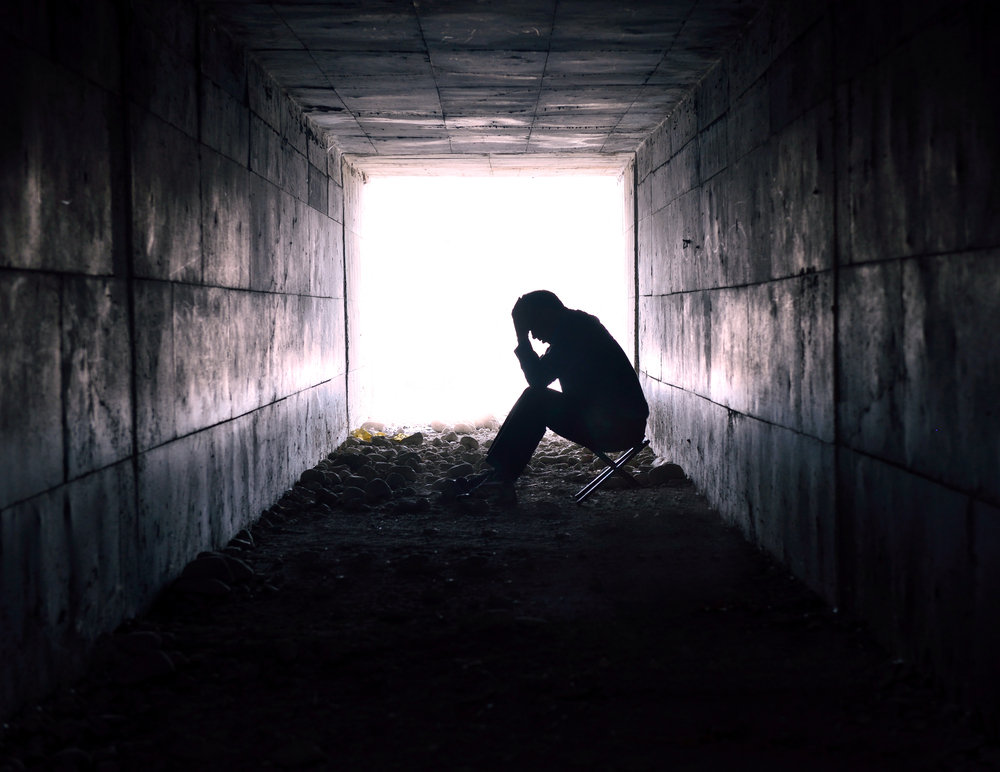Suicide strikes those we may least expect. Take for instance the beautiful woman with everything at her fingertips. She may be struggling to hold in her hurt. The man with an incredible promotion and family may be planning his exit as you read this. The truth is suicidal people are not necessarily going to voice their contemplation of suicide: they will attempt it. I should know. I was one of them.
Symptoms of suicidal thoughts may include but are not limited to:
- Talking about wanting to die
- Researching ways to die or holding a fascination with death
- Harboring feelings of hopelessness
- Mentioning unbearable pain with no foreseeable way out
- Talk about “burdening” others
- Behaving recklessly compared to one’s normal behavior
- An increase of alcohol, drugs, or sexual activity
- Withdrawing from others / loneliness / lack of a support network
- Sleeping too little or too much (a sign of depression)
- Mood swings
- Anger or need for revenge
- Depression whether short-lived or a constant battle
- A previous suicide attempt

- Family history of mental disorders (bipolar, depression, etc) or substance abuse
- Family violence in any form
- Having weapons in the home or accessibility to lethal weapons (including drugs)
- Previous time in incarceration, prison, or jail
- Personal loss (on any end of the spectrum)
- Self-loathing or self-hatred
- Terminal illness or chronic pain
- A sudden sense of calm after depression
- Saying goodbye to loved ones. (They may not say “goodbye” but the effect is the same)
In addition to these warning signs, children and young adults between the ages of 15-34, American Indians, Alaskan Native, non-Hispanic Whites, and men are at a greater risk but this by no means negates the severe concern for older age groups or those of other ethnicities and genders. Men are more likely to attempt death by more violent means (i.e. firearms, suffocation) than women who may choose poisoning. One suicide, no matter the form, is one too many.
 In my case I did not know there was a history of attempted suicide in my family or a family history of depression. Most of the tell tale “signs” of suicidal tendencies did not apply to me. I was outgoing but kept the extreme pain to myself because I did not want to burden anyone. Even my suicide plan involved the least amount of burden to my loved ones. I did not discuss my thoughts with anyone. On the outside I was the envy of my peers. Inside I was dying and nothing made the pain stop. I said my own version of “goodbyes.” I didn’t want to die. I wanted to live but I couldn’t live with the excruciating emotional loss I endured alone. Ending one’s life is a permanent action to a temporary problem. The trouble is those who are suicidal do not see a way out of their situation except death… which is why they are considering or planning to do it. It isn’t that there is not a viable way out of their pain but that the pain blocks the person from seeing all potential ways to alleviate it. Here is what I wish I would have known before I nearly took my life.
In my case I did not know there was a history of attempted suicide in my family or a family history of depression. Most of the tell tale “signs” of suicidal tendencies did not apply to me. I was outgoing but kept the extreme pain to myself because I did not want to burden anyone. Even my suicide plan involved the least amount of burden to my loved ones. I did not discuss my thoughts with anyone. On the outside I was the envy of my peers. Inside I was dying and nothing made the pain stop. I said my own version of “goodbyes.” I didn’t want to die. I wanted to live but I couldn’t live with the excruciating emotional loss I endured alone. Ending one’s life is a permanent action to a temporary problem. The trouble is those who are suicidal do not see a way out of their situation except death… which is why they are considering or planning to do it. It isn’t that there is not a viable way out of their pain but that the pain blocks the person from seeing all potential ways to alleviate it. Here is what I wish I would have known before I nearly took my life.
[Tweet “One suicide, no matter the form, is one too many.”]
What you can do to help yourself:
- Seeking a therapist is a wise decision. For those who cannot afford therapy, there are non-profit programs and sometimes religious leaders to help. Medication is also a viable option that may be given by a therapist to aid the person in wellness. Some seek to avoid the stigma of being labeled insane which is why they are less likely to seek help (as was my case).
- Be sure to tell someone you trust whether by letter or face to face, or call a hotline (do not be vague in your description of your troubles. Be explicit.). There are also many great informational resources such as helpguide.org.
- Do not isolate yourself. Make sure you are around others.
- You can create a safety plan of daily activities and stick to it no matter how difficult it may be. Your safety plan should include ridding your surroundings of anything that could potentially cause harm.
- Your plan can include exercise (which gives us natural endorphins to make us feel better).
- Take a walk or sit outdoors (the sunlight naturally helps).
- Make time for things that bring you joy even if it seems silly to others. You are a wonderful creation and you
 deserve to take time out to notice the amazing person you are. There is always someone who looks up to us whether we realize it or not. Little things like taking the time to notice a flower blooming can bring momentary happiness. Momentary happiness is a stepping stone to full time peace.
deserve to take time out to notice the amazing person you are. There is always someone who looks up to us whether we realize it or not. Little things like taking the time to notice a flower blooming can bring momentary happiness. Momentary happiness is a stepping stone to full time peace. - Make a list of personal goals. One small positive step is a step in the right direction. Give yourself something to look forward to.
[Tweet “Ending one’s life is a permanent action to a temporary problem. “]
Every year more than 37,000-41,000 suicides occur in the United States. You don’t have to be one of them. There is hope. You will feel better again! There is a way out of your situation that does not involve death. Like me, you will be glad you decided not to end your life. Trust me.
[Tweet “Momentary happiness is a stepping stone to full time peace.”]
Maybe you aren’t suicidal but you suspect someone you know and love could be. There are ways you can help them.
If you suspect someone you love is suicidal:
- Let the person know you sincerely care about them and they will not walk through this alone.
- Listen. The person needs to express their anger and pain. Do not judge or lecture. Be sympathetic and calm.
- Offer your loved one hope. Don’t be afraid to ask them if they are suicidal. If someone had asked me I would have faltered at admitting it, but even hesitancy is a good indicator that they are suicidal.
Did you know there are different levels of suicide risk? Any suicide level is a risk and should be taken seriously.
Low Level– Includes some suicidal thoughts.
Moderate Level– Has suicidal thoughts with a vague plan that isn’t very lethal.
 High Level– Has suicidal thoughts with a specific plan that is highly lethal.
High Level– Has suicidal thoughts with a specific plan that is highly lethal.
Severe Level– Suicidal thoughts with a specific plan that is highly lethal and may say that he or she is going to commit suicide.
I wish you peace and joy as you seek the help you deserve. You are valuable and the world is a better place for having you. Reach out. Now.

